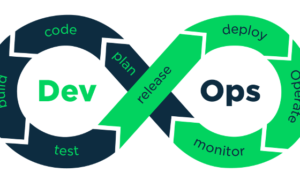Are you ready to witness the future of education? Brace yourselves, because artificial intelligence is here to revolutionize teaching as we know it! From personalized learning experiences to advanced data analysis, AI has the potential to transform classrooms into hubs of innovation and inspiration. In this blog post, we will explore seven incredible ways educators can harness the power of AI and take their teaching methods to extraordinary new heights. Get ready for a mind-blowing journey that will leave you itching to embrace this groundbreaking technology in your own classroom!
Introduction to AI in Education
Artificial intelligence (AI) has been making waves in various industries, and the field of education is no exception. With advancements in technology, AI has found its way into classrooms and is revolutionizing the way students learn and teachers teach. In this section, we will explore what AI is and how it can be harnessed in education.
What is AI?
AI refers to a computer system’s ability to perform tasks that typically require human intelligence. This includes learning, reasoning, problem-solving, decision-making, and more. AI algorithms are designed to analyze data, identify patterns, and make predictions or recommendations based on that data without explicit instructions from a programmer.
6 Ways Educators Can Utilize AI:
Ways Educators Can Utilize AI:
Artificial intelligence (AI) has been making waves in various industries, and the education sector is no exception. With its ability to analyze data, make predictions, and automate tasks, AI technology has the potential to revolutionize teaching methods and enhance student learning. In this section, we will explore some ways educators can harness the power of AI to improve their teaching practices.
1. Personalized Learning:
One of the most significant benefits of AI in education is its ability to personalize learning for students. With AI-powered adaptive learning software, teachers can create individualized lesson plans based on each student’s strengths, weaknesses, and learning style. This allows for a more tailored approach to teaching and ensures that students are challenged at their appropriate level.
2. Grading and Feedback:
Grading assignments and providing feedback is an essential part of any educator’s job but can also be time-consuming. By using AI grading tools such as automated essay scoring or multiple-choice question evaluation systems, teachers can save valuable time while still providing timely feedback to students. These tools use natural language processing and machine learning algorithms to evaluate student work accurately.
3. Identifying Learning Gaps:
AI technology can analyze vast amounts of data from student assessments and identify patterns or gaps in their understanding of a particular subject or concept. This information can help teachers understand where students need additional support or intervention before moving on to new topics.
4. Virtual Tutoring and Mentoring:
With advancements in natural language processing, chatbots powered by AI have become increasingly popular as virtual tutors or mentors for students outside of regular classroom hours. These chatbots are available 24/7 and can provide personalized assistance with homework questions or clarifications on class material.
5. Smart Content Creation:
Creating engaging course materials is essential for keeping students interested and motivated in their studies. With AI-powered content creation tools, educators can generate interactive lessons with visual aids that cater to different learning styles. These tools can also make recommendations for additional resources based on students’ performance and progress.
6. Predictive Analytics:
AI technology can predict student outcomes by analyzing data such as grades, attendance, and behavior patterns. This information can help teachers identify at-risk students and intervene early to support their academic success.
AI has the potential to revolutionize teaching methods and enhance student learning in numerous ways. From personalized learning to predictive analytics, educators have a vast range of tools at their disposal to improve teaching practices and create a more engaging and effective learning experience for their students. By embracing AI technology in education, teachers can stay ahead of the curve and prepare students for a future where AI will play an increasingly significant role in various industries.
Addressing Concerns and Criticisms of AI
While the use of artificial intelligence (AI) in education holds great potential for revolutionizing teaching, it is not without its concerns and criticisms. Many people worry about the ethical implications of using AI in the classroom, while others question its effectiveness and impact on students’ learning experiences. In this section, we will address some of these concerns and criticisms and provide insights on how educators can address them.
1. Ethical Considerations
One of the main concerns surrounding AI in education is its potential to perpetuate existing biases and discrimination. Since AI algorithms learn from data, they are susceptible to inheriting any biases present in that data. This means that if there is bias within the educational system, it could be reflected in the decisions made by AI systems, further perpetuating inequalities among students.
To address this concern, it is crucial for educators to actively monitor and review the data used to train AI systems regularly. They should also ensure that diverse perspectives are included in developing these systems to mitigate any inherent biases.
Another ethical consideration is privacy and security. With AI collecting vast amounts of student data, there is a risk of it being misused or falling into the wrong hands. Educators must prioritize safeguarding student information by implementing strict protocols for handling data and ensuring compliance with privacy laws.
2. Effectiveness
There are also valid questions about whether using AI actually improves student learning outcomes or if it simply replaces human teachers’ roles. Some critics argue that relying too heavily on technology can hinder the development of critical thinking skills in students.
To address these concerns, educators must recognize that technology should not replace but rather enhance their teaching methods. Instead of solely relying on pre-programmed content delivery methods, educators can leverage AI as a tool for personalized learning experiences tailored to each student’s needs.
It is also essential for teachers to continuously evaluate the effectiveness of using AI in their classrooms and make necessary adjustments to ensure that it is improving student learning outcomes.
3. Impact on the Teaching Profession
Another criticism of AI in education is its potential to replace human teachers and create job redundancies. However, rather than replacing teachers, AI can free up their time from administrative tasks and allow them to focus on more meaningful interactions with students.
Educators must also actively advocate for policies that support responsible and ethical implementation of AI in education, ensuring that it complements rather than replaces human educators.
While there are valid concerns and criticisms surrounding the use of AI in education, these can be addressed through responsible implementation and continuous evaluation by educators. With proper consideration given to ethical implications, effectiveness, and impact on the teaching profession, AI has the potential to enhance teaching practices and ultimately improve student learning outcomes.
Conclusion
The potential benefits of incorporating AI into education are vast. By embracing this technology responsibly and utilizing it effectively, educators can help students reach their full potential and prepare them for the rapidly evolving technological landscape. As we continue to explore the possibilities of AI in education, one thing is certain: the role of educators will continue to be crucial in shaping the minds of future generations. Let us embrace this revolution and use it to create a more innovative, personalized, and impactful learning experience for all students.



































